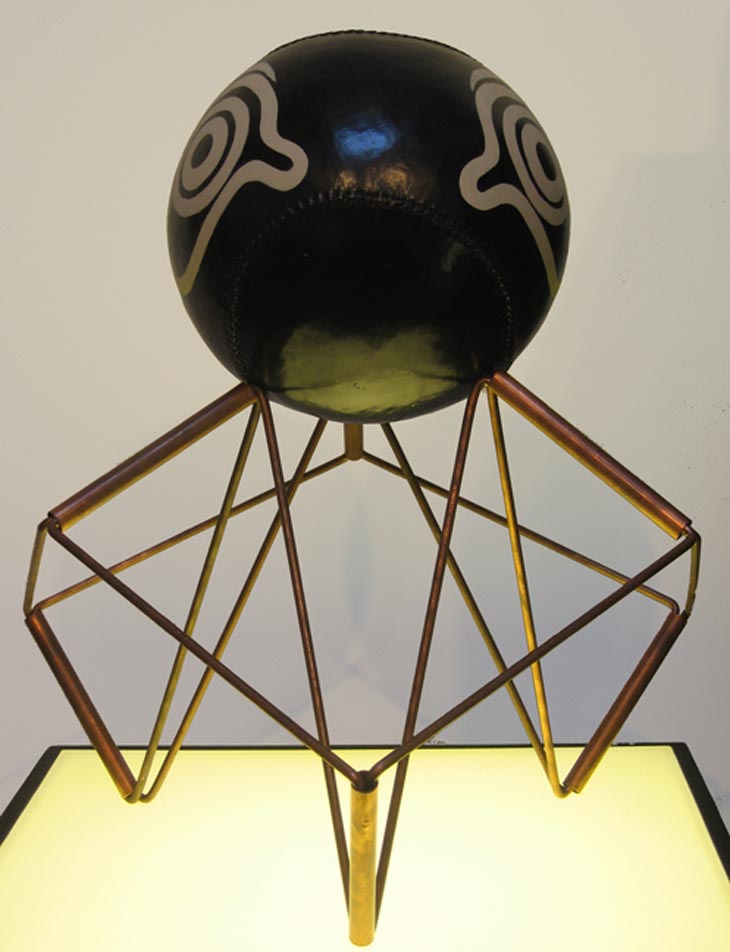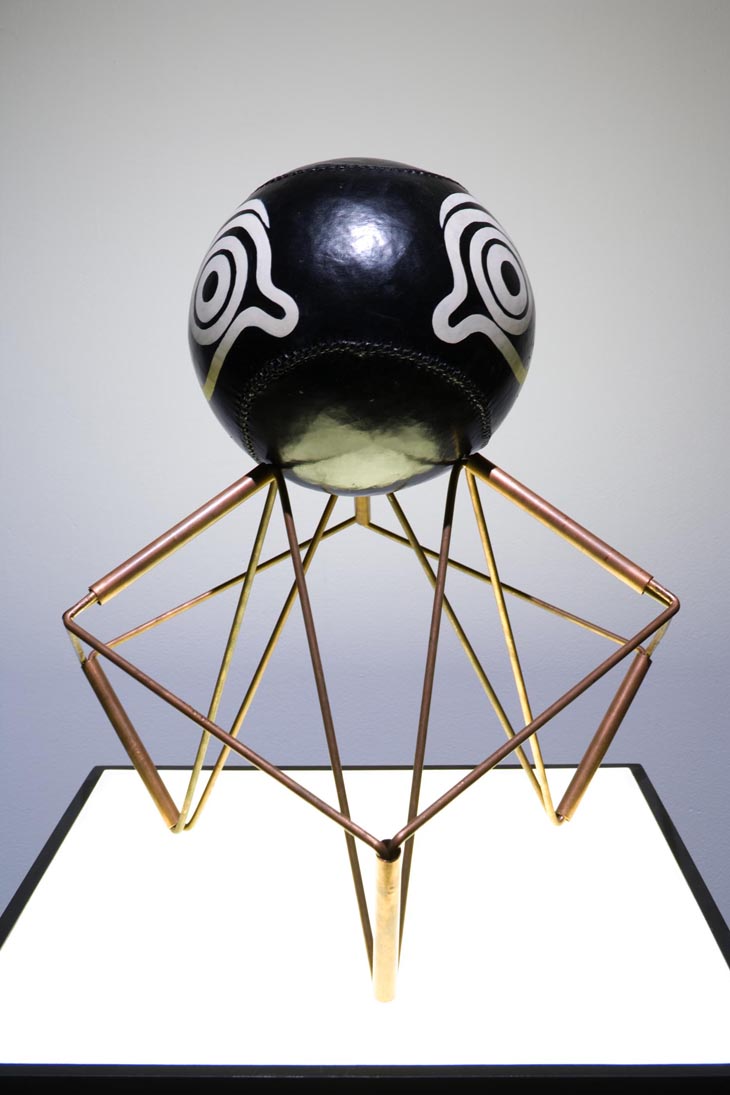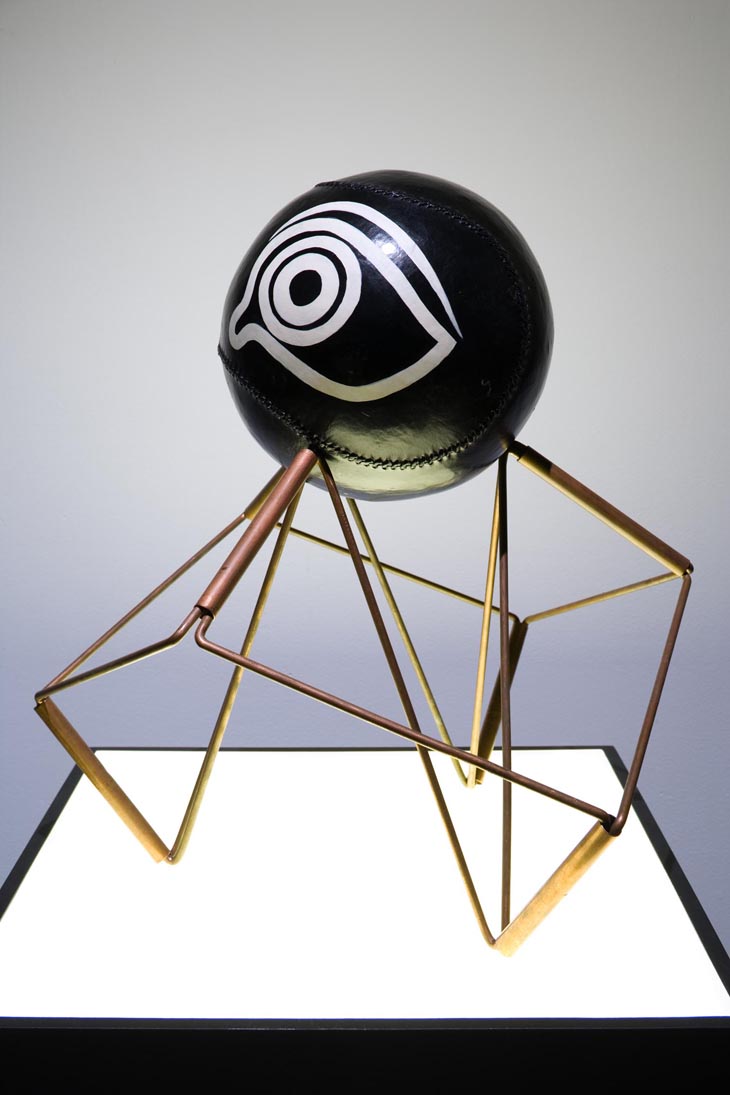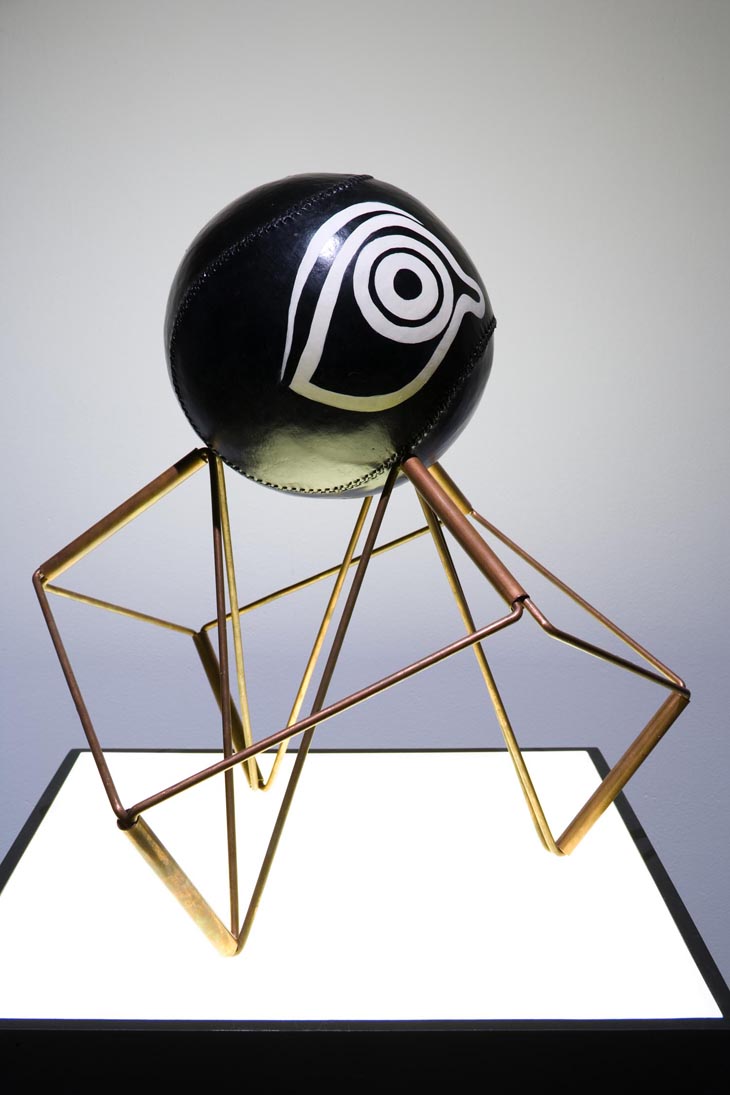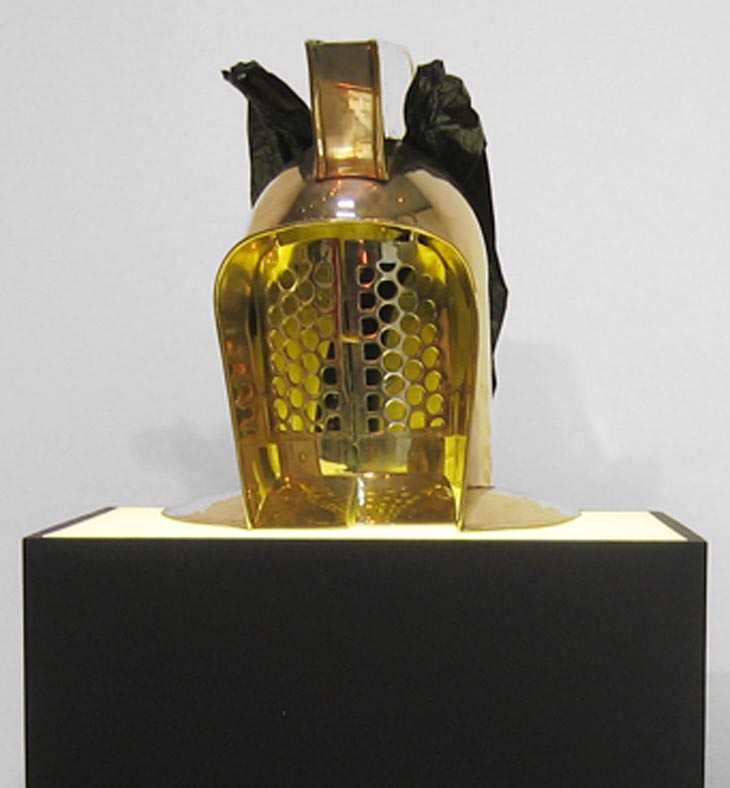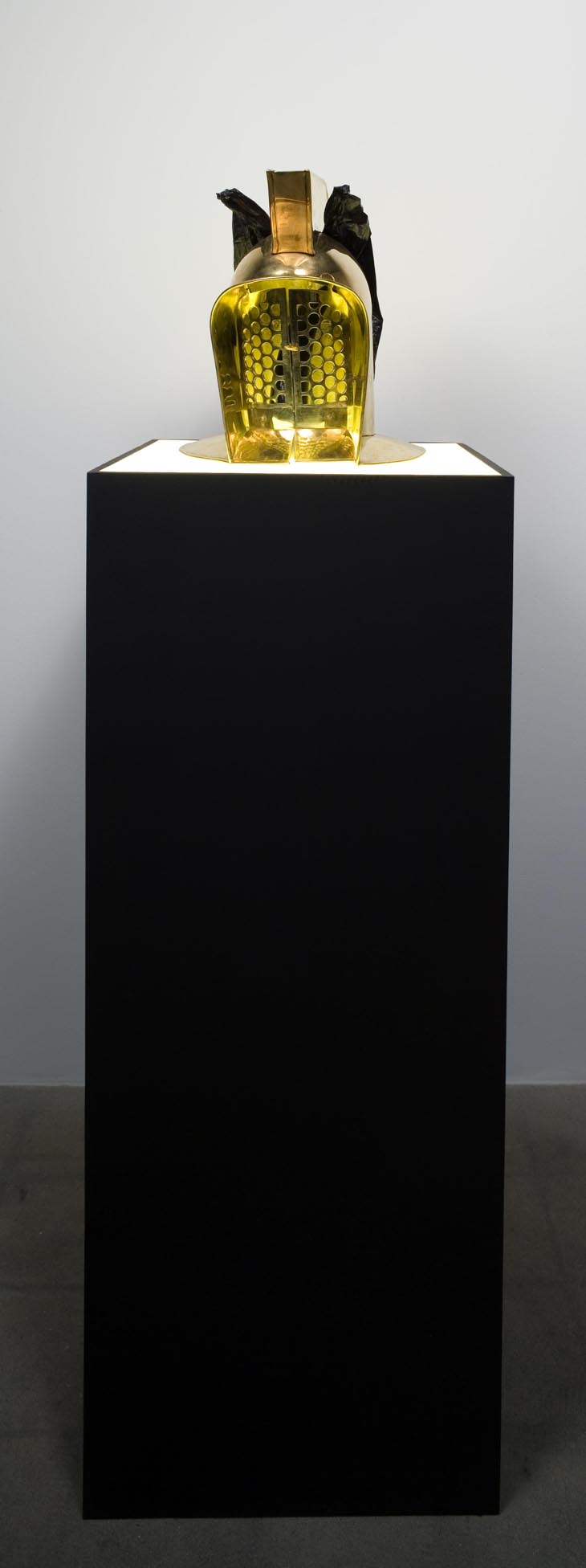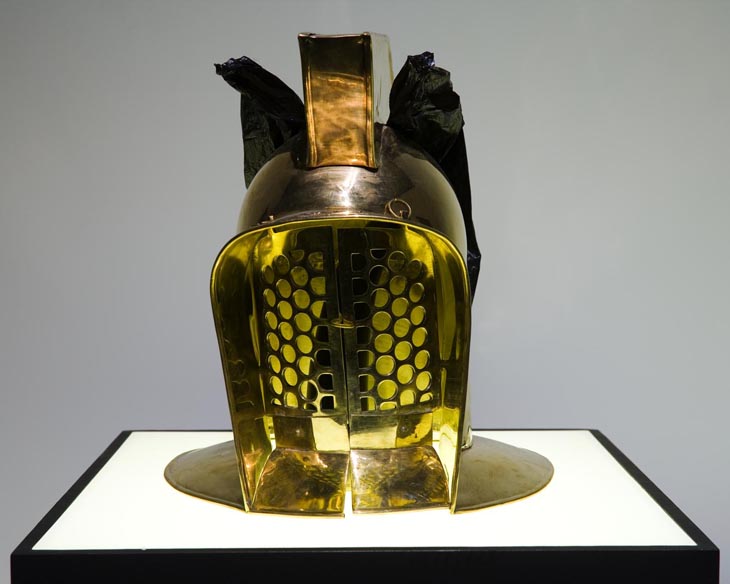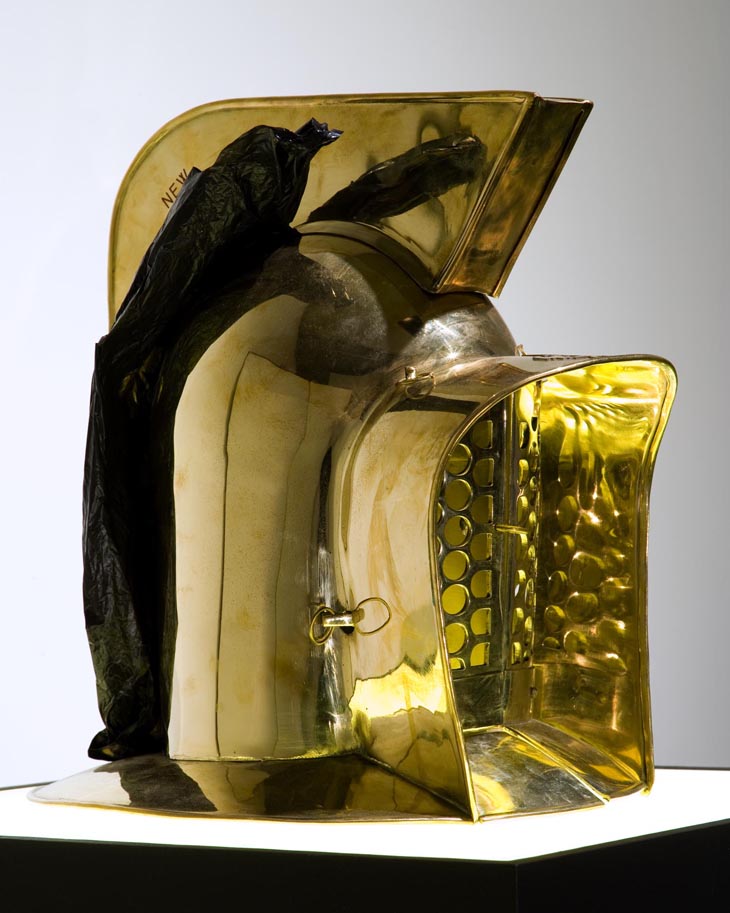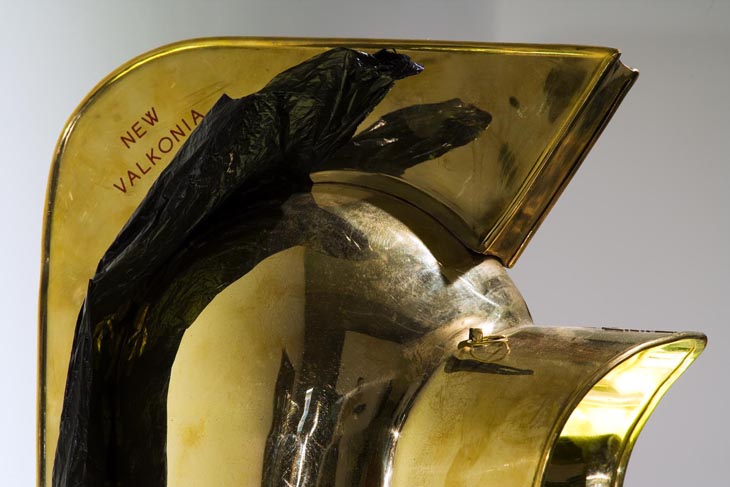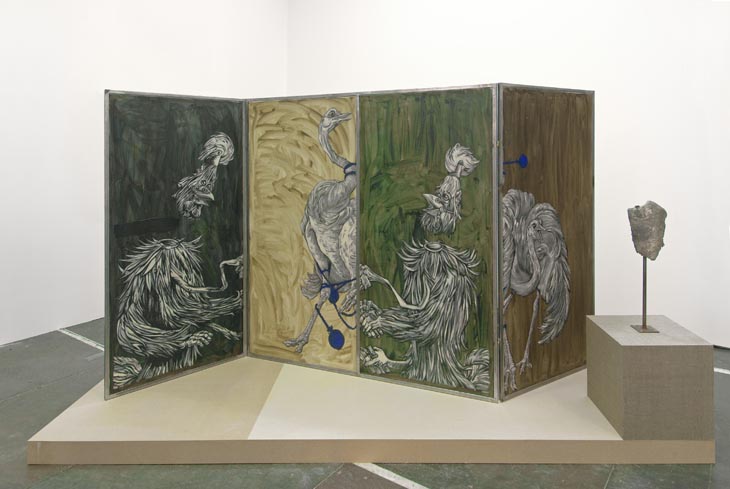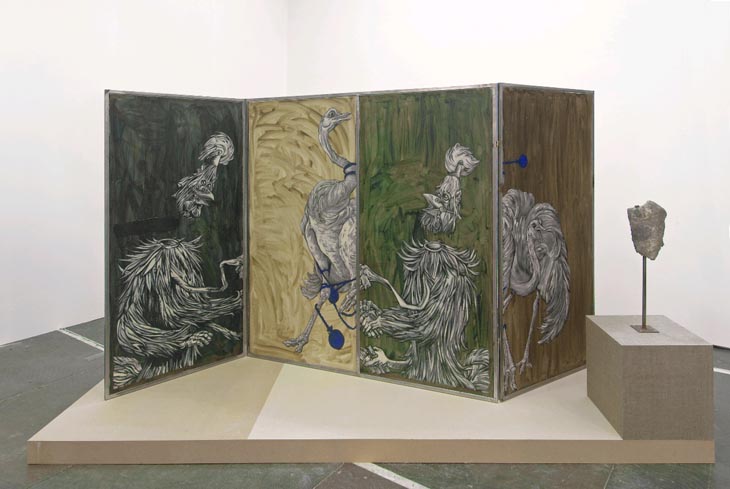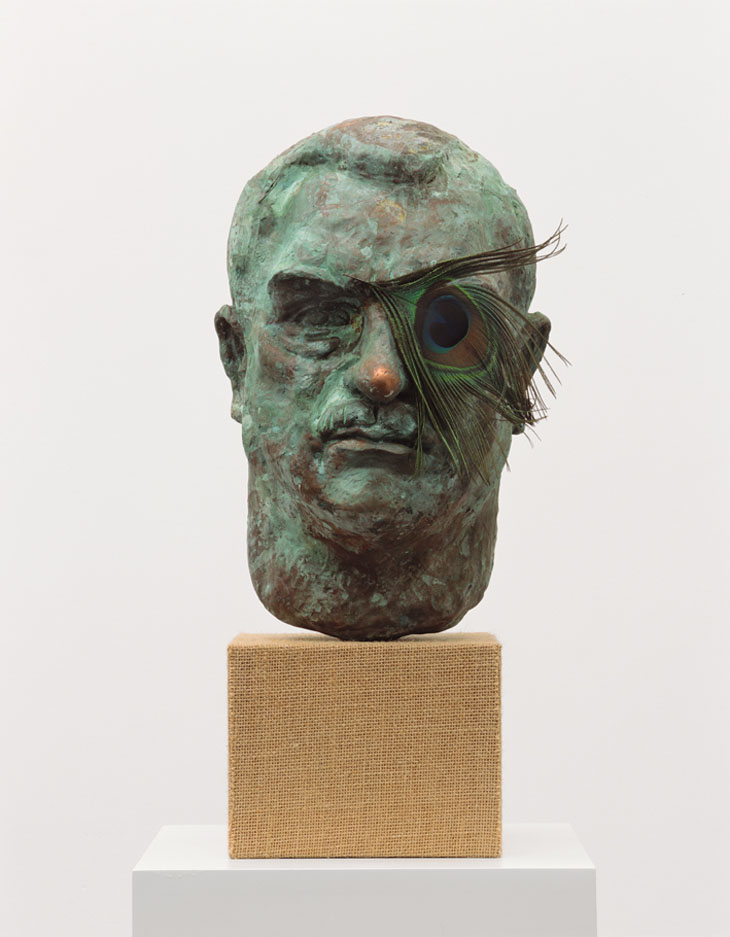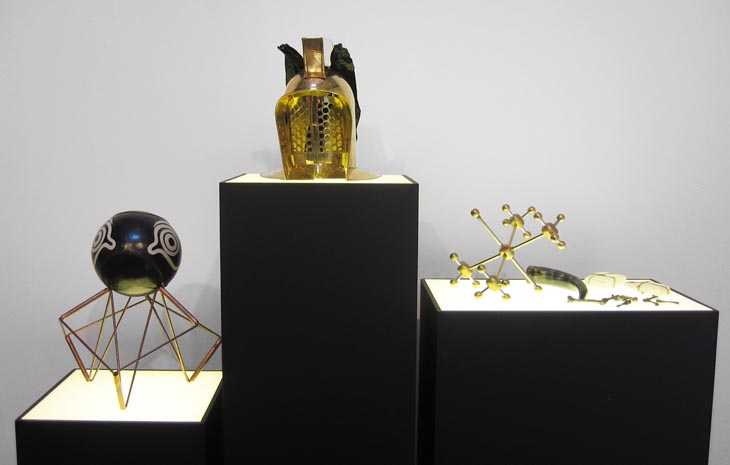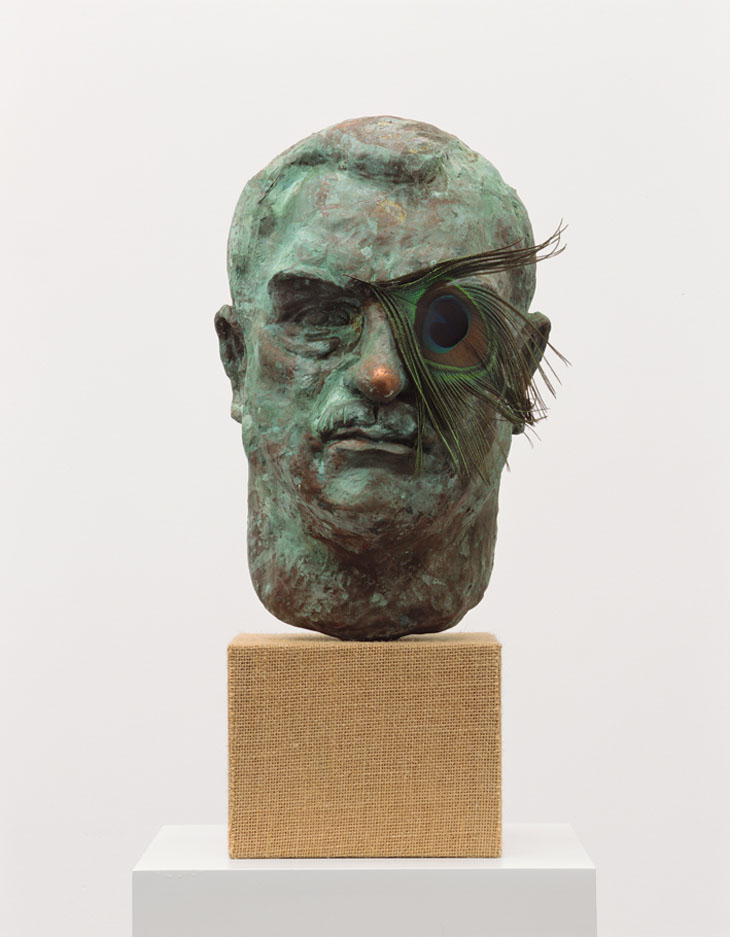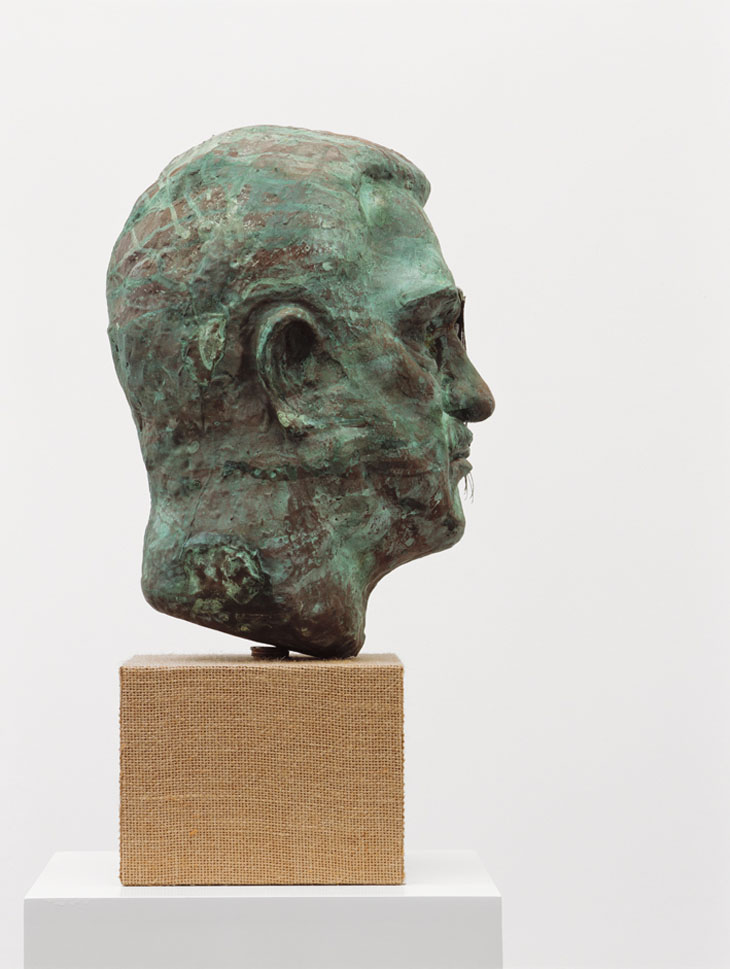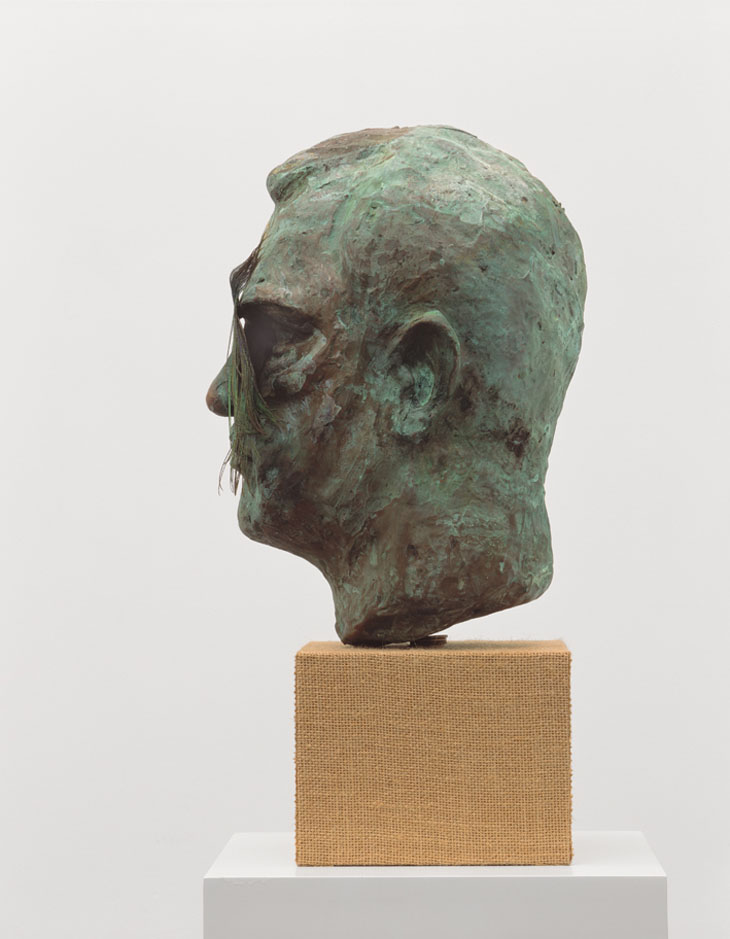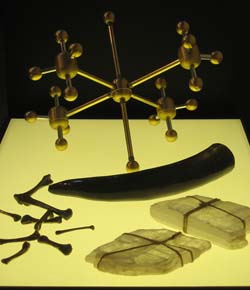
Valkonian Objects
Steven Claydon

Steven Claydon, Valkonian Objects, 2007
Brass and steel, bull horn, quartz crystals, bronze
Molecular model: (34.3 x 38.1 x 38.1 cm) Chicken bones: dimensions variable Bull horn: 5.4 x 33 cm 3.8 x 16.5 x 12.7 cm Lightbox/pedestal: 94 x 76.2 x 50.8 cm
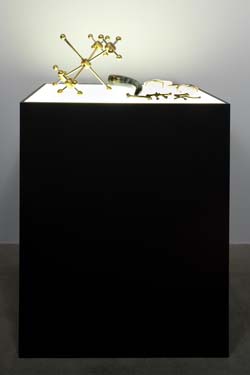
Valkonian Objects
Steven Claydon

Steven Claydon, Valkonian Objects, 2007
Brass and steel, bull horn, quartz crystals, bronze
Molecular model: (34.3 x 38.1 x 38.1 cm) Chicken bones: dimensions variable Bull horn: 5.4 x 33 cm 3.8 x 16.5 x 12.7 cm Lightbox/pedestal: 94 x 76.2 x 50.8 cm
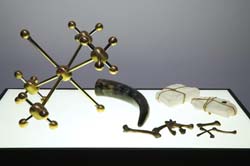
Valkonian Objects
Steven Claydon

Steven Claydon, Valkonian Objects, 2007
Brass and steel, bull horn, quartz crystals, bronze
Molecular model: (34.3 x 38.1 x 38.1 cm) Chicken bones: dimensions variable Bull horn: 5.4 x 33 cm 3.8 x 16.5 x 12.7 cm Lightbox/pedestal: 94 x 76.2 x 50.8 cm
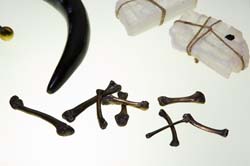
Valkonian Objects
Steven Claydon

Steven Claydon, Valkonian Objects, 2007
Brass and steel, bull horn, quartz crystals, bronze
Molecular model: (34.3 x 38.1 x 38.1 cm) Chicken bones: dimensions variable Bull horn: 5.4 x 33 cm 3.8 x 16.5 x 12.7 cm Lightbox/pedestal: 94 x 76.2 x 50.8 cm
The Thingliness of Things I (Potatoes In The Cellar) takes its inspiration from Heidegger’s writings on art. One of Heidegger’s philosophical problems was what exactly is it that gives art its special value? At what point does art become art and not just an ordinary object? Heidegger explored this question via a comparison between a stored work of art and potatoes kept in a cellar. Claydon’s own position in relation to this is “I see it as a more complex situation with subtle variations between the realms of material baseness and balanced subjectivity.” In The Thingliness of Things I (Potatoes In The Cellar) Claydon offers an assemblage incorporating domestic and institutional forms that reference both the everyday and the power systems that assign cultural worth.
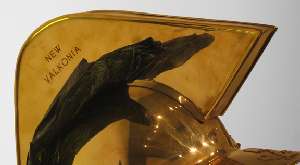
Chitin & A-Parallelism (New Valkonia)
Steven Claydon

Steven Claydon, Chitin & A-Parallelism (New Valkonia), 2007
Brass, bull horn, plastic helmet
Helmet: 38.1 x 35.6 x 35.6 cm
Bull horn: 31.8 x 5.4 x 5.4 cm
Lightbox/pedestal: 127 x 50.8 x 50.8 cm
Dims variable
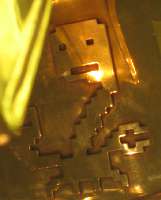
Chitin & A-Parallelism (New Valkonia)
Steven Claydon

Steven Claydon, Chitin & A-Parallelism (New Valkonia), 2007
Brass, bull horn, plastic helmet
Helmet: 38.1 x 35.6 x 35.6 cm
Bull horn: 31.8 x 5.4 x 5.4 cm
Lightbox/pedestal: 127 x 50.8 x 50.8 cm
Dims variable
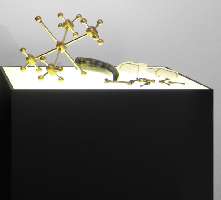
Valkonian Objects
Steven Claydon

Steven Claydon, Valkonian Objects, 2007
Brass and steel, bull horn, quartz crystals, bronze molecular model: 34.3 x 38.1 x 38.1 cm
Chicken bones: dims variable
Bull horn: 5.4 x 33 cm
Crystals: 3.8 x 17.8 x 10.2 cm & 3.8 x 16.5 x 12.7 cm
Lightbox/pedestal: 94 x 76.2 x 50.8 cm
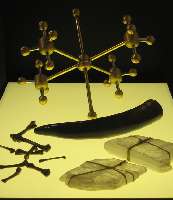
Valkonian Objects
Steven Claydon

Steven Claydon, Valkonian Objects, 2007
Brass and steel, bull horn, quartz crystals, bronze molecular model: 34.3 x 38.1 x 38.1 cm
Chicken bones: dims variable
Bull horn: 5.4 x 33 cm
Crystals: 3.8 x 17.8 x 10.2 cm & 3.8 x 16.5 x 12.7 cm
Lightbox/pedestal: 94 x 76.2 x 50.8 cm
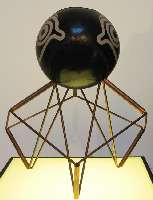
The Ancients Set Great Store
Steven Claydon

Steven Claydon, The Ancients Set Great Store, 2007
Copper, leather, paint
Ball: 27.9 x 27.9 cm
Copper structure: 50.8 x 50.8 x 50.8 cm
Lightbox/pedestal: 64.5 x 50.8 x 50.8 cm
Dims variable
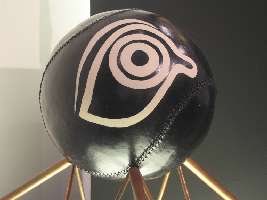
The Ancients Set Great Store
Steven Claydon

Steven Claydon, The Ancients Set Great Store, 2007
Copper, leather, paint
Ball: 27.9 x 27.9 cm
Copper structure: 50.8 x 50.8 x 50.8 cm
Lightbox/pedestal: 64.5 x 50.8 x 50.8 cm
Dims variable
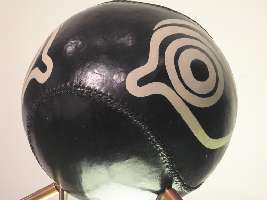
The Ancients Set Great Store
Steven Claydon

Steven Claydon, The Ancients Set Great Store, 2007
Copper, leather, paint
Ball: 27.9 x 27.9 cm
Copper structure: 50.8 x 50.8 x 50.8 cm
Lightbox/pedestal: 64.5 x 50.8 x 50.8 cm
Dims variable
Set atop light boxes, Claydon’s mundane objects, such as a medicine ball, cast chicken bones, and new age stones are bathed in the aura-creating light of a museum display, questioning their cultural value. Their arrangement is both scientific and mystical, imbuing the humble relics with the promise of supernatural powers. Cast in bronze from KFC leftovers the bones reference the practice of telling fortunes from animal remains, while the cheap crystals gain treasured status.
Claydon’s The Author of Mishap (Them) takes its inspiration from J.G. Frazer’s The Golden Bough, an early 20th-century dissertation on magic and ritual that was widely denounced for its questionable methodology – a comparative anthropology by ‘genre’ rather than linear science. Mirroring Frazer’s logic, Claydon’s portrait is a composite of three heroic busts of political figures from this time, each embodying radically opposing beliefs. Through this literal hybrid, Claydon incites the current revivals of genetic engineering and post-modern eclecticism as plausible validation of Frazer’s theories. Substituting the traditional hallowed material of bronze for cast copper powder and resin, Claydon defiles his subject’s monumentality; the aged patina has been created through urinating on the object, both an act of defamation and a reference to Warhol’s egalitarian pop. Perched on a burlap-coated plinth reminiscent of 1950s gallery wall coverings, Claydon reinforces his sculpture’s historical stature while belying its association with outdated fashion. The peacock feather operates primarily as a formal device, adding a surreal and dilettantish air to the impoverished authoritarian relic.
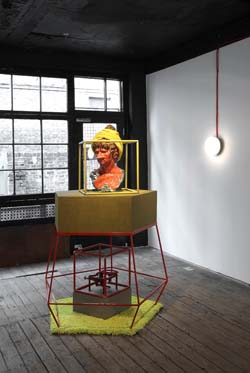
Omar (Emergent)
Steven Claydon

Steven Claydon, Omar (Emergent), 2008
Ceramic, powder-coated steel, carpet, plywood, starched hessian, found objects, aluminium
189 x 125 x 125 cms
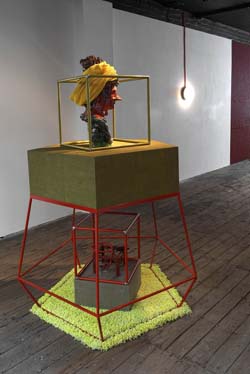
Omar (Emergent)
Steven Claydon

Steven Claydon, Omar (Emergent), 2008
Ceramic, powder-coated steel, carpet, plywood, starched hessian, found objects, aluminium
189 x 125 x 125 cms
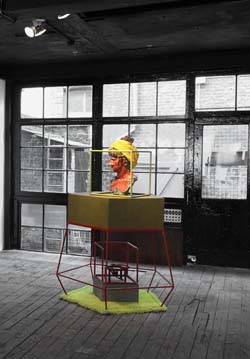
Omar (Emergent)
Steven Claydon

Steven Claydon, Omar (Emergent), 2008
Ceramic, powder-coated steel, carpet, plywood, starched hessian, found objects, aluminium
189 x 125 x 125 cms
Omar (Emergent) draws reference to De Rerum Natura, an epic poem written by Lucretius to promote Epicureanism to the Romans, as well as the Rubaiyat, an 11th-century Islamic tome by Omar Khayyam. Khayyam was a champion of the Enlightenment who advocated a humanist interpretation of Islam which included women’s rights and drinking. Omar (Emergent) addresses the contradictory developments of philosophical rationalism in relation to contemporary science. Inspired by an ancient Greek belief in the mystical properties of mathematics, Claydon’s sculpture poses as a ‘dodecahedron’, a totem worshipped by the Pythagoreans; the relic was held to bestow god-like powers of good or evil to its possessor. Mounted on the structure is a ceramic bust representing a transforming entity. This tension between the sacred and profane is mirrored through Claydon’s use of domestic or vulgar materials to create an aesthetic of authority.
